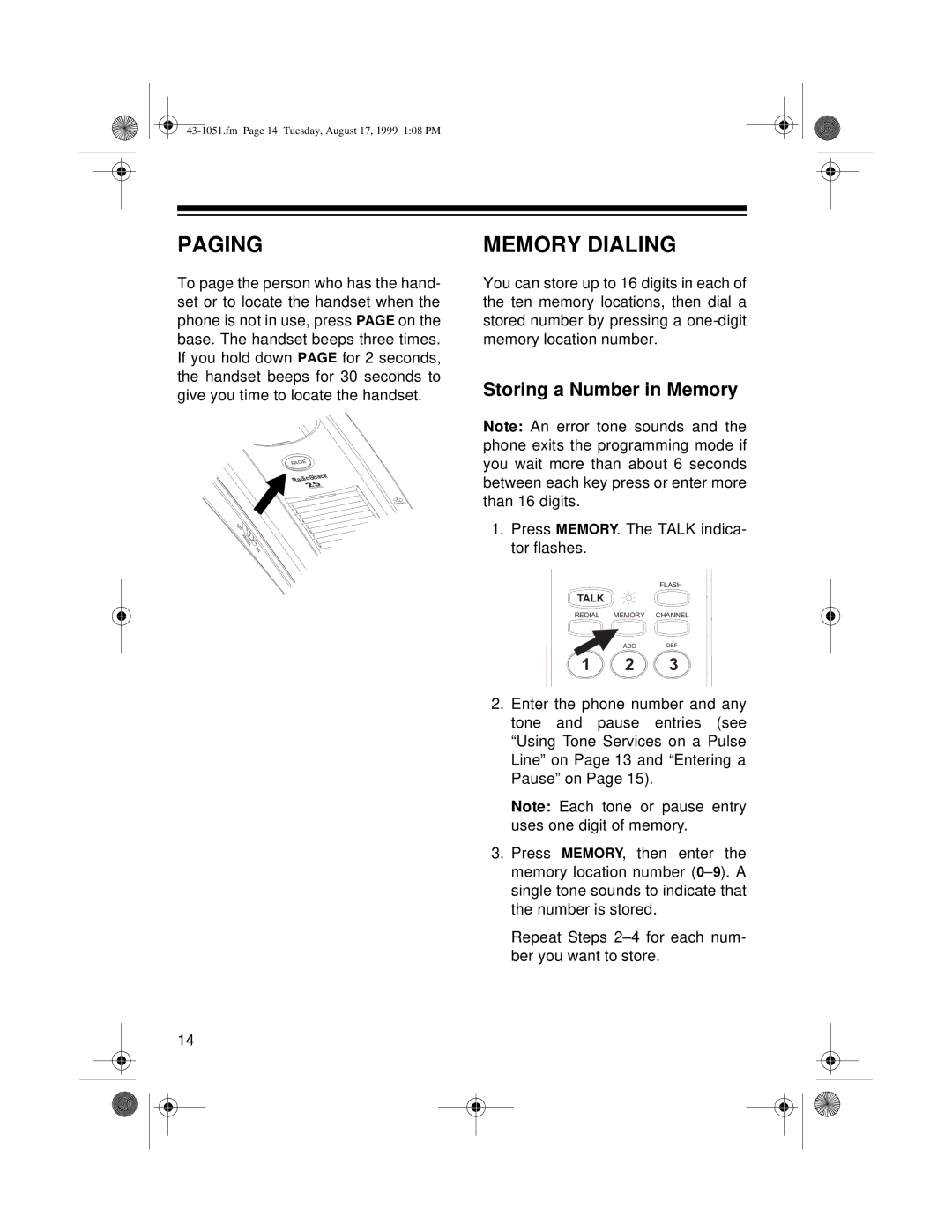RT-551 specifications
The Radio Shack RT-551 is a dynamic dual-band amateur radio transceiver that has gained notable recognition among hobbyists and professionals alike. Launched as part of Radio Shack's commitment to deliver quality communication equipment, the RT-551 stands out with its impressive set of features and advanced technologies suitable for both casual and serious radio operators.One of the standout features of the RT-551 is its dual-band capability, allowing users to operate on both the 2-meter and 440 MHz bands. This frequency versatility ensures that operators can communicate over a broad range of amateur radio applications, making it an ideal choice for various communication scenarios. The transceiver offers a wide frequency range, enabling connections across local and regional networks as well as interoperability with other amateur equipment.
The RT-551 is equipped with a powerful 50-watt output, ensuring strong signal strength and clarity during transmissions. This output is complemented by an advanced receiver sensitivity, enabling clear reception even in challenging environments with high levels of interference. Clear communication is further enhanced by the built-in noise filter, which eliminates background noise, making conversations more pleasant and intelligible.
In terms of ease of use, the RT-551 features an intuitive control panel with well-laid-out buttons and a large LCD display that provides clear frequency readouts and other vital information. This user-friendly design allows operators of all skill levels to quickly set up and navigate through the radio's functions without confusion.
Moreover, the RT-551 supports CTCSS and DCS encoding and decoding, which are essential for private communications on crowded frequencies. This feature ensures that users can communicate discreetly and avoid interference from unwanted signals.
The transceiver also includes a built-in Automatic Noise Limiter (ANL) that further improves incoming signal quality by suppressing noise and enhancing voice clarity. This feature is particularly beneficial for operators working in urban environments or regions with significant radio traffic.
In conclusion, the Radio Shack RT-551 is a well-rounded amateur radio transceiver that combines robust power, flexibility, and ease of use. Its dual-band operation, advanced noise filtering technology, and user-friendly design make it a favorite among radio enthusiasts. Whether for local conversations or connecting with distant stations, the RT-551 provides the reliability and performance demanded by dedicated radio operators.

